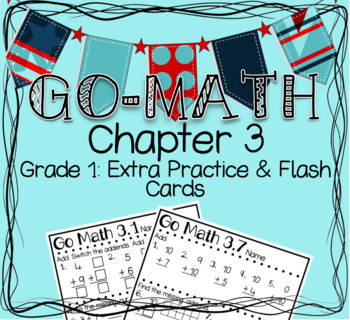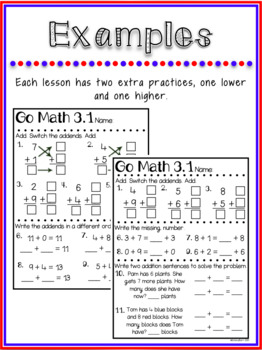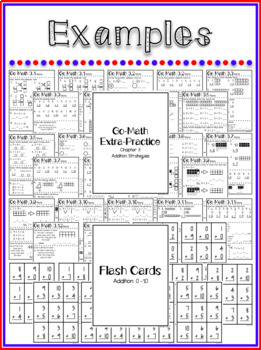First Grade Go-Math Worksheets Chapter 3: Addition Strategies
American Made Teacher-Kelsey Burr
19 Followers
Grade Levels
1st
Subjects
Resource Type
Standards
CCSS1.OA.A.1
CCSS1.OA.A.2
CCSS1.OA.B.3
CCSS1.OA.C.6
CCSS1.OA.D.7
Formats Included
- PDF
Pages
38 pages
American Made Teacher-Kelsey Burr
19 Followers
What educators are saying
These worksheets are great and just what my students needed! They provide the perfect amount of extra practice to ensure that they understand the skills and concepts before we move onto the next one.
Description
This unit allows for extra practice for all of the Go-Math chapter three lessons for first grade. There are two worksheets available per lesson. The first worksheet for each lesson is based on a reteach, the second worksheet is more of an enrichment. The problems are similar to the problems in each lesson and the ones found on the Go-Math Chapter 3 tests.
This unit also includes Addition Flashcards 0-10.
Total Pages
38 pages
Answer Key
N/A
Teaching Duration
N/A
Report this resource to TPT
Reported resources will be reviewed by our team. Report this resource to let us know if this resource violates TPT’s content guidelines.
Standards
to see state-specific standards (only available in the US).
CCSS1.OA.A.1
Use addition and subtraction within 20 to solve word problems involving situations of adding to, taking from, putting together, taking apart, and comparing, with unknowns in all positions, e.g., by using objects, drawings, and equations with a symbol for the unknown number to represent the problem.
CCSS1.OA.A.2
Solve word problems that call for addition of three whole numbers whose sum is less than or equal to 20, e.g., by using objects, drawings, and equations with a symbol for the unknown number to represent the problem.
CCSS1.OA.B.3
Apply properties of operations as strategies to add and subtract. If 8 + 3 = 11 is known, then 3 + 8 = 11 is also known. (Commutative property of addition.) To add 2 + 6 + 4, the second two numbers can be added to make a ten, so 2 + 6 + 4 = 2 + 10 = 12. (Associative property of addition.)
CCSS1.OA.C.6
Add and subtract within 20, demonstrating fluency for addition and subtraction within 10. Use strategies such as counting on; making ten (e.g., 8 + 6 = 8 + 2 + 4 = 10 + 4 = 14); decomposing a number leading to a ten (e.g., 13 - 4 = 13 - 3 - 1 = 10 - 1 = 9); using the relationship between addition and subtraction (e.g., knowing that 8 + 4 = 12, one knows 12 - 8 = 4); and creating equivalent but easier or known sums (e.g., adding 6 + 7 by creating the known equivalent 6 + 6 + 1 = 12 + 1 = 13).
CCSS1.OA.D.7
Understand the meaning of the equal sign, and determine if equations involving addition and subtraction are true or false. For example, which of the following equations are true and which are false? 6 = 6, 7 = 8 - 1, 5 + 2 = 2 + 5, 4 + 1 = 5 + 2.




